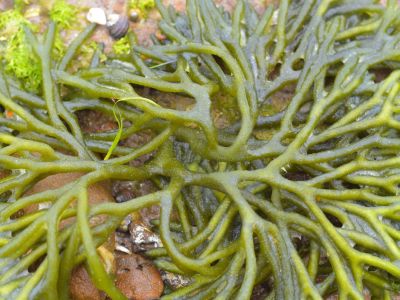What is a Saltwater Aquarium?
Learning about a saltwater aquarium for beginners is fine, but understand before you dive in that these ecosystems require meticulous and regular care, or the fish will die. Be prepared to put in lots of time and effort. A saltwater aquarium is simply a tank or container with saltwater into which you put species that live in that type of environment. It’s like a small slice of the ocean. You can create an ecosystem specific to a region or type of environment, like a Caribbean reef. Any saltwater aquarium needs a few essentials: the tank, a filter and skimmer, a substrate, a heater, fish, and of course, plants.
Choosing Plants for Saltwater Aquariums
If you’re ready to start building a saltwater aquarium, you will have a lot of supplies to buy. The fun part is choosing the animals and the plants. Here are some popular saltwater aquarium plants that will grow readily in your new ecosystem:
Halimeda – This is an attractive green plant with leaves like chains of coins. Since it grows throughout the oceans, halimeda is a good choice for just about any type of environment you create.Green finger algae – Any algae type is good for your aquarium because it acts as a natural filter. This one has fleshy, finger-like leaves resembling coral.Spaghetti algae – This is common in saltwater aquariums because it is fairly easy to grow. It is also a good source of food for fish that eat algae. It provides visual interest with its clump of noodle-like leaves.Mermaid’s fan – This plant looks like the name suggests, like a delicate green fan sprouting from the bottom of the tank. These can be difficult to grow if you don’t have the right nutrient balance, though. They need calcium and limited phosphate and nitrate.Shaving bush plant – This is a good companion for mermaid’s fan because it absorbs excess phosphates and nitrates. It has a central stem with a bunch of thin leaves, resembling a shaving brush.Sea grass – Essential in coral reefs, sea grass grows in clumps like grass and provides habitat and shelter for juvenile fish.Red grape algae – For something different, try red grape algae. The air bladders are red and round and resemble grapes.Blue hypnea algae – For a real visual punch, this type of algae delivers. It grows in dense clumps and is iridescent blue. You’ll need a courser substrate for its roots to grip.
